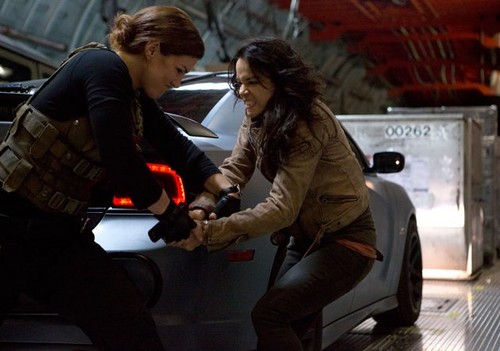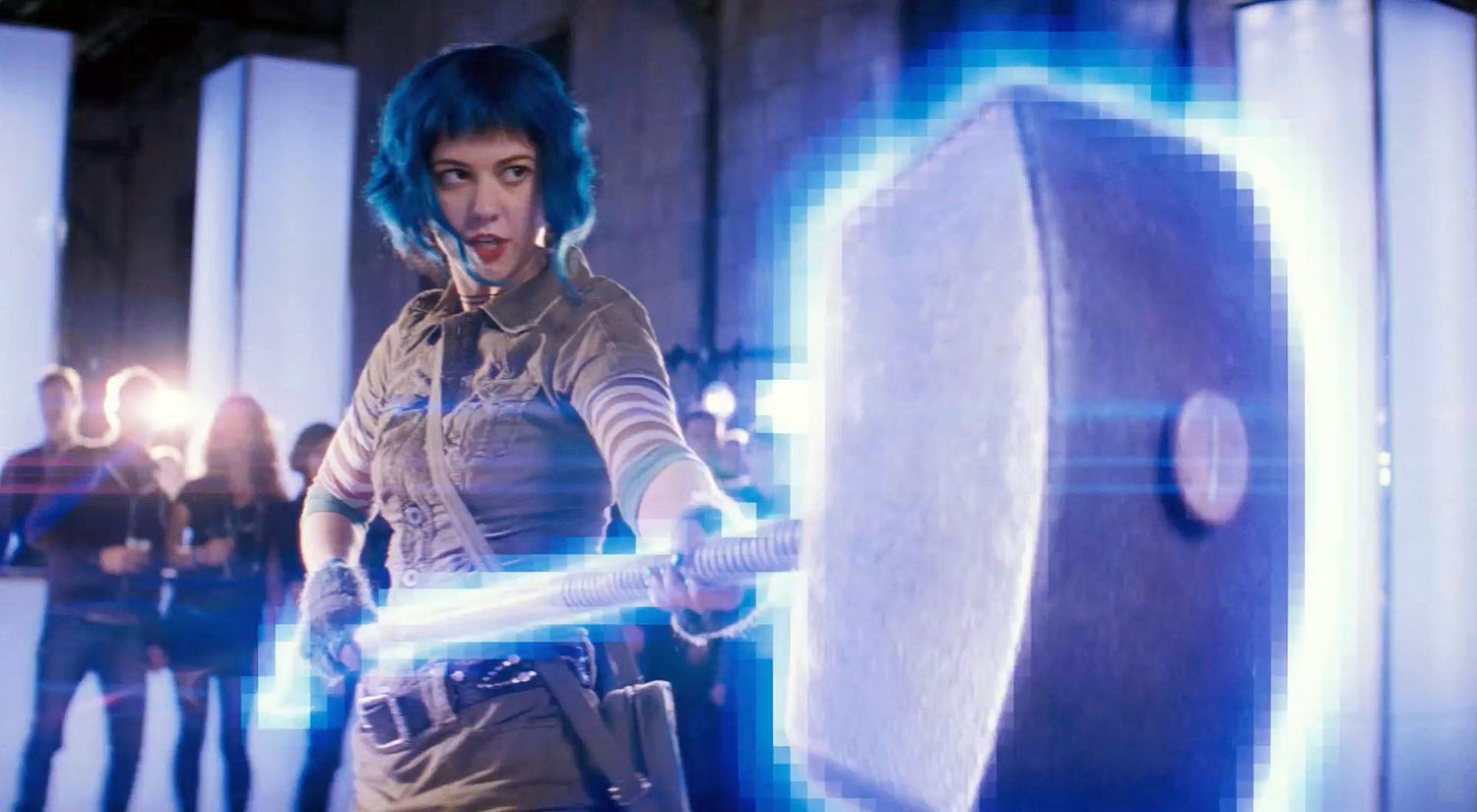| There is nothing that says more about this film than this picture of a man flying through the air from a tank to a car.... |
“At least when I go, I'll know what it's for.”
1) I was surprised how much this film demaded an intimate knowledge of the entire Fast and Furious continuity; director Justin Lin does his best to tie in every. single. element from all the five previous films by calling back to all of them and trying to make it all work into a single storyline. I don’t know if it works completely, but then I prefer the more integrated backstorying to the stop-and-star of Fast 5.
2) Especially given how the search for Lettie was the center of this film, did we really need Elisa Pataky, even for the brief scenes she has? They don’t do anything for either her or Dom--actually, they end up creating this weird vibe at two points in the film--that couldn’t have been handled better by a couple of lines of dialogue.
3) It’s obvious to me that if Fast 5 was Lin’s take on Ocean’s Eleven, then this is Lin’s take on James Bond. Hell, I was surprised at how much the plot and climax seems to take a lot of elements from Die Another Day...and actually improves on them! And speaking of one of those elements...
| Getting the band back together for the last time. |
4) Gina Carrano is a real worthy addition to the cast. She gives us two exceptional fights with Lettie, she has a good chemistry with Dwayne Johnson, and works well with the already extant cast. I just wish she didn’t end up the way she ended up, even if Lin didn’t even bother to conceal where her plotline was going.
5) Lin really works to make sure we have a number of cool chase scenes that are different from each other and, more importantly, makes sure they are more or less clearly defined. He adheres to many of the rules of storytelling in depicting these set pieces (like the way he used ‘the rule of three’ in the climatic cars v. plane thingie), and avoids for the most part the shakey cam that would have made all the running about incomprehensible.
6) I liked how Lin knew that the street racing aspect of the franchise simply wouldn’t work given the low-rent vibe of the film...so he ends up utilizing that aspect to, of all things, do a character moment between Dom and Lettie. And it works.
 |
| Yep...two tough hot chicks having a catfight. That is what life is all about. |
8) I do think that Christopher ‘Ludacris’ Bridges’ Tej works a whole lot better in the tech role than Jordana Brewster did in the previous film. It does help that Lin puts Tej in the field, coordinating during the major action pieces and doesn’t keep him sitting in a warehouse clacking on computers.
9) God bless directors who know how to use a MacGuffin correctly. Lin presents us with the Nightshade device, tells us why it is dangerous...and then gets back to the punchy punchy run run. We don’t get paragraphs of dialogue trying to tell us every little thing we should know about it; Lin knows we just need a justification of a threat to make the plot move forward.
10) ...and God Bless a director who knows how to give us a post-credit stinger, because not only does this stinger finally resolves one of the biggest F&F continuity questions, it tells us something about what to expect in Fast 7 that makes you want to see it...NOW.
Overall...Yes, it’s still a big, dumb film, but it’s tighter and better paced than the previous entry with a lot of decent action. A good time waster.
This time I took a trip to the AMC Loews Bay Terrace, a smaller mall theater that I will always appreciate for not giving us some variation of the accursed Firstlook televisual spam. Among the trailers were ones for Riddick (which seems to have jettisoned the overcomplicated Furian stuff from The Chronicles of Riddick in favor of a semi-remake of Pitch Black), The World’s End (I have yet to see anything Edgar Wright has done I haven’t loved, so I’m down for this Alien-Invasion-Pub-Crawl thingie), and R.I.P.D. (because I always wanted to know what Men In Black would be like with Ryan Reynolds replacing Will Smith. Wait a minute...no I didn’t!). But by far the trailer that got me the most worked up was the one for Pacific Rim, where the editors make it clear that they know what we want--namely shots of giant robots hitting giants monsters in the head with oil tankers. I’m there!





